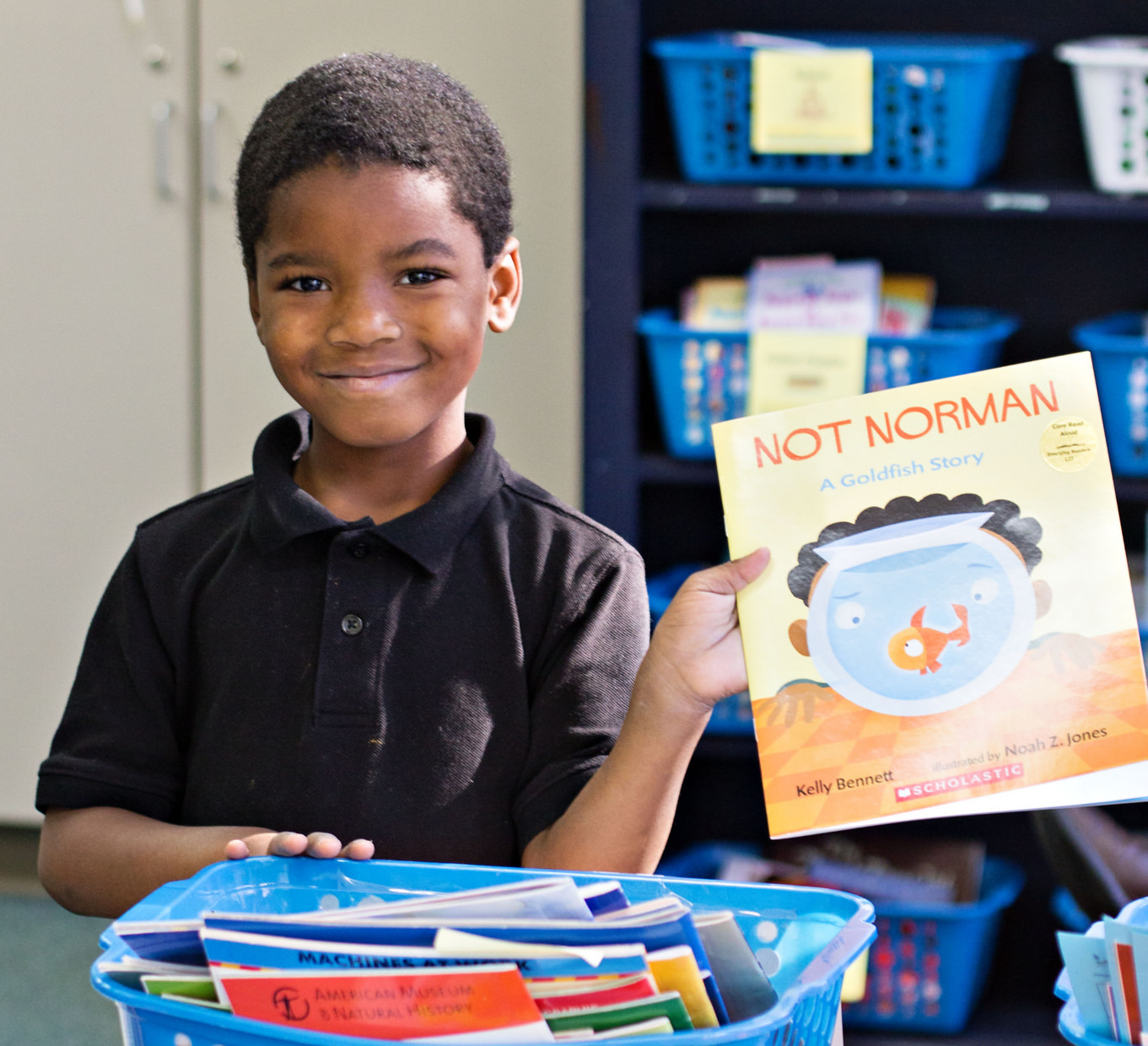
The power of joy for early readers
March 29, 2018
Sr. National Operations Coordinator
My mom could get anyone under the age of ten to like onions. It wasn’t that the onions became any less “onion-y,” or that she coated them in sprinkles and honey to entice. My mom drew me (and her nieces, nephews, neighbors’ kids…) to like onions because of how she presented them to us: as if they were the greatest food in the world.
When a child holds up a book, it will either be foreign, it will be a friend, or it will be a source of indifference. There are so many new toys, gadgets, games, and electronics competing for a child’s attention; who’s to say a book—that does not light up nor talk back—will be prime pick?
It’s difficult now more than ever, but we must help kids fall in love with reading and see the value of a book if we ever want them to become lifelong readers.
So how is it done? There is no one perfect formula for cultivating bookworms. Nor do we want all the same type of bookworm! The child can have reading as her only after-school hobby, or she can have reading as a retreat between soccer practices and other things she loves. He can be carrying Narnia around everywhere he goes or he can turn to that world after a hard day at school. The point is not to create “stock” readers, but rather to cultivate a joy that comes alive when a child engages with a book.

Five tips to help kids enjoy reading
1. Cultivate a strong reading habit yourself
Many of our volunteers and partners who support the Reading Partners program started with us because they love reading; many started because they themselves struggled with reading as a child. Whatever your story, we hope that reading somehow now holds a meaningful place in your world. There is no better way to convince a child to love reading than if you love reading yourself. So help yourself fall in love with reading again: nonfiction, poetry, on the bus, before bed—and remind yourself why this is such a worthwhile habit to invest in.
2. Speak with joy
Kids can sense when we’re faking it. The shot at the doctor will hurt; the carrots are not going to turn you orange. Building off the joy you have for reading, children will sense a genuine appreciation for books pouring out of you. And—as the student’s “teacher”—it is our job to model this joy, to make the joy so magnetic that the student wants a piece of the action, too. Some phrases to help you exude this include:
- One thing I love about reading is…
- I love stories like this, because they help us understand why…
- This one time, I was reading and I discovered…
- That’s why I like books, because they help me to…
- I love how I can learn about so much through books…
3. Don’t force it
Notice how a lot of the “speak with joy” phrases point back to the “I”? It is an invitation for the student to come into your world of loving reading. There is no way to “force” a child into book appreciation. However, when we model the joy of what books can do in our own lives, it opens up a world of wonder where the student can see him or herself as a strong reader, too. Literacy coach Lucy Calkins pinpoints that we must be cognizant of “teaching not only strategies but also values…The [enthusiasm used] to convey these values is as important as the activities” themselves. The student will not always remember specific minilesson moments, but time after time when we will build a nostalgia and comfort around reading—it allows for every positive memory to build upon the last.
4. Tie it to their interests and goals
Similar to adults, oftentimes children will not root into an idea without an answer to the long-term question, “Why?” Seeing the bigger purpose helps a learner understand why little lessons matter in the moment. It’s hard for a fourth grader to grasp the significance of “story arc” when the biggest thing in her world is basketball. But if I can connect the “arc” of a basketball making a swoosh to the arc of a story plotline, there is greater room for success.
If a student loves “being a veterinarian,” ask him why he thinks reading is important to this dream (going to school, reading doctor’s manuals, learning about different kinds of puppies…) and let the child see you are on his side. When kids understand that we are their advocates, learning changes. Any way you can, make them see that you are helping them read because you want them to be able to pursue their own individual goals and interests.
5. Make a habit of reading
The best kind of learning is the kind that seeps itself into our bones. If every time my mom pulls out onions and says, “Mmmm!” holding up the sauté spoon like a golden scepter, I am going to become curious. Children thrive off of routine, and it sets them up for optimal success. When children know that reading is promoted by adults as not just a one-time event, but a habit—they will start to see the value that is placed upon it in a mentor’s eyes. Over time, they will look forward to it as a stable comfort, no matter how unpredictable the rest of their world is. By establishing bedtime or just-after-school-time as “the” reading time, the grown-up in the child’s life creates the expectation that says to the student: this matters. Reading is here to stay.



